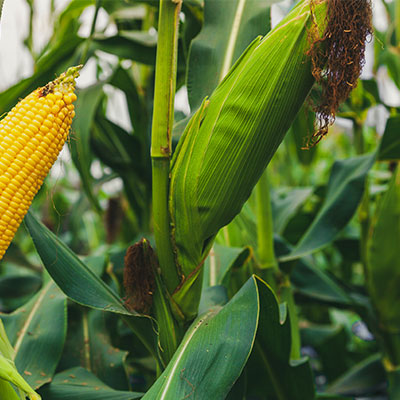Porto Alegre, November 7, 2023 – Once again, the corn market tried to seek the loss of support at the USD 4.70/bushel level on the CBOT but was once again contained by information that helped funds resume some upward movement. The process of accumulating corn prices on the CBOT between USD 4.70 and 5.00/bushel does not reflect fundamentals, especially for a crop that still has 30% to be reaped this November. Without China, US exports are not advancing at the desired speed, while Brazil sets monthly export records. Premiums have begun to decline in the Gulf of Mexico, but Chicago remains at a high level for the current conception of local stocks.
Markets were positively shaken last week, following the release of US economic data and a sharp decline in the dollar. The weaker dollar helps dollar-set commodity prices, although the yuan has still maintained a strong devaluation at 7.30/dollar.
For soybeans, the US picture is adjusted, in which demand and export data will determine whether local stocks will shrink more quickly or may stay within the USDA projection. There is panic in the soymeal market due to this crushing curve in the USA and the halt in new sales in Argentina. Well, this greatly benefits Brazil for both the old and new crops, especially the soybean industry, which will now have great export prices for soymeal.
More aggressive actions in the war in the Black Sea helped to provide some support in the wheat market as well. With production losses in Australia, Argentina, and Brazil, the movement of supply in the Black Sea, particularly through Russia, will determine the wheat price curve from the beginning of 2024. However, corn has not found, in the short and medium term, a variable that could contribute to a consolidated bullish environment, that is, breaking the level of USD 5.00/bushel and sustaining it. The first point is that US stocks are fully recovering, while local consultancies are increasing productivity for this crop.
The second point refers to demand and exports. Without a sharp hike in oil, there is little room for an increase in margins and demand for ethanol and, consequently, corn. At the same time, without good demand from China, it will be difficult for the US to resume exports well above 52 mln tons this season, even as Argentina will resume exports from March onward, meeting a large part of global demand. At the same time, Brazil has been exporting aggressively this year, reaching over 55 mln tons and meeting a large portion of demand until March.
Thus far, US sales have been above last season’s. This should be considered normal, any many of these sales were made amid the climate situation in July/August and fears of a decline in production. Global consumers made purchases in advance. Could this continue after these numbers return to normal? Premiums have begun to decline in the Gulf of Mexico, but perhaps this alone will not be enough to restore the competitiveness of US corn while Brazil is selling. Would the United States be able to reach its export target having only Mexico as its biggest buyer?
Despite these considerations, the corn market on the CBOT continues to seek to maintain the accumulation between USD 4.70 and 5.00/bushel, resisting losing support and reflecting a situation of greater US domestic supply. For now, this is healthy for the market on the producer’s side, not to inhibit planting too much in future seasons. For Brazil, it will guarantee competitiveness and strong exports, especially with the presence of China.
Now, the situation most contrasting with reality is the view that Argentina will have problems with its crop in an El Nino year. The rains in Argentina returned in good volumes in October, especially last week. In Buenos Aires, the top growing province, the planting is advancing with good rains, and Cordoba and Santa Fé are expected to speed it up in November. There is no problem planting in November or even December in the country; the harvest will only be later. In the history of El Nino years, there have been no losses in corn production. For the 23/24 season, the market tries to bet on something that is rare or has never occurred.
Follow the Safras Agency on our website. Also follow us on our Instagram and Twitter and stay on top of the main agribusiness news!
Copyright 2023 – Grupo CMA

